First Drive: Cadillac CTS Review: longer, leaner and lower
- Written by David Miller
- Published in CAR REVIEWS
- font size decrease font size increase font size
- Be the first to comment!
Cadillac has been reinventing itself over the last couple of years to reach out to a new, younger generation. The transformation has taken form with its luxury sports sedan, the ATS and now with the middle-tier flagship sedan, the CTS. It always takes a while for consumers to make that transition over, but the third-generation CTS is hoping to lay the groundwork for that.
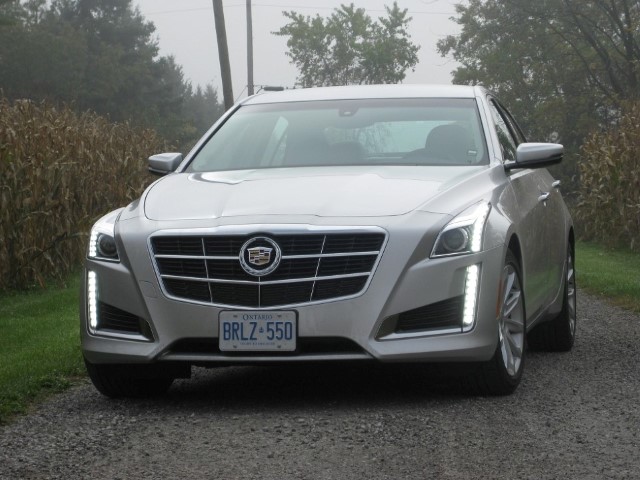
The CTS has plenty of competition including the Jaguar XF, the Infiniti Q70, the Lexus GS and the Mercedes-Benz E-Class E350. However, the one car that Cadillac has its sights set-on is the BMW 5-Series. It’s always good to aim high and if the CTS can take a chunk of sales away from those vehicles listed above – they would be doing well to better their status.
To achieve this goal, Cadillac has focused their attention on improving the CTS’ exterior and interior looks as well as its performance. An emphasis on making it more luxurious and technologically sound was imperative.
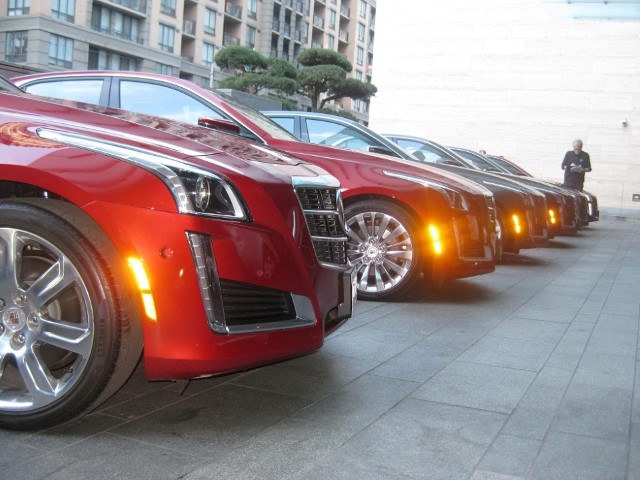
The event was held at the beautiful Shangri-La hotel in downtown Toronto. It was a perfect setting for the CTS launch, as they both share similarities when it comes to sophistication, style and elegance. Now let’s break down the new CTS for you.
Initial Glance
The Cadillac CTS has gone through a much needed dieting regiment. It’s now a lightweight in its class after shedding 200 kilograms from the previous model. When sized up against the BMW 5-Series –it weighs in at 90 kilograms lighter. This weight loss is mainly due to the use of aluminum in its door structure and throughout the new CTS creating a 50/50 weight balance. Lots of attention was placed in every component to save on weight and to result in better handling, acceleration, braking and of course in the fuel economy department. With all of this weight loss, the CTS still managed to increase its wheelbase by 1.2-inches, stretching it out to add some more leg room for the comfort of its passengers.
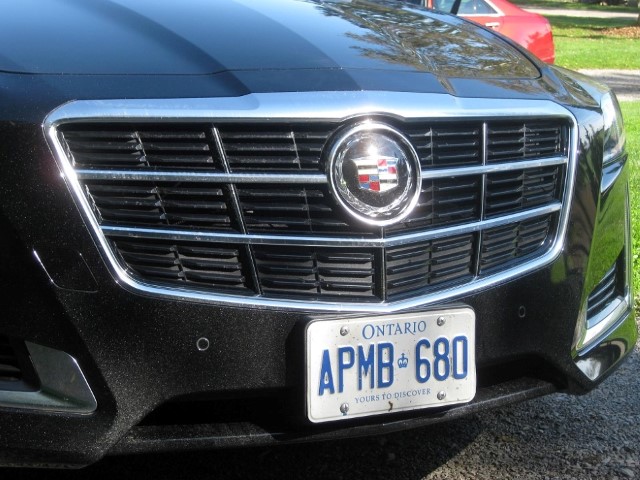
The roofline and hood were lowered 19mm and 30mm, respectively, to create a lower and sportier appearance. While, the new grille is noticeably wider with the Cadillac badge centered in the middle. A standout feature of the exterior are the CTS’ headlamps and LED lights flowing vertically upward on each side of the car. It’s a striking pattern that sets the tone for the new image of Cadillac.
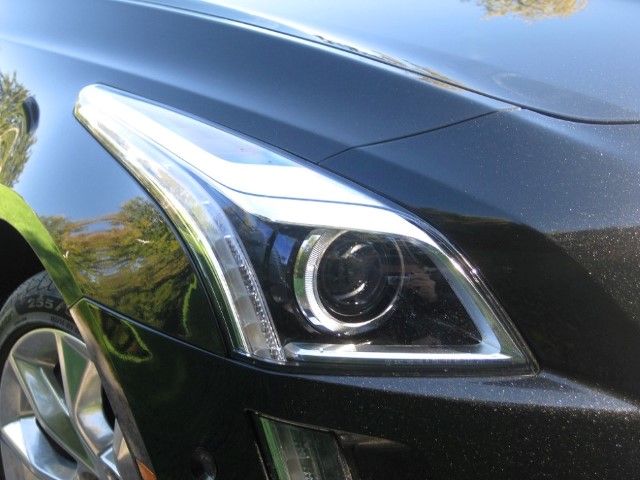
A Look Inside
Similar to Cadillac’s rival company, Lincoln, it has tried to re-invent its brand with a radical change to its interior. Cadillac has designed the inside to be more driver-centric. Every nook and cranny has been analyzed to create the most unique, complementary finish to enhance your experience. One of the more eye-catching features of the cockpit are the magnesium paddle shifters that erect from the back of the soft-leather wrapped steering wheel.
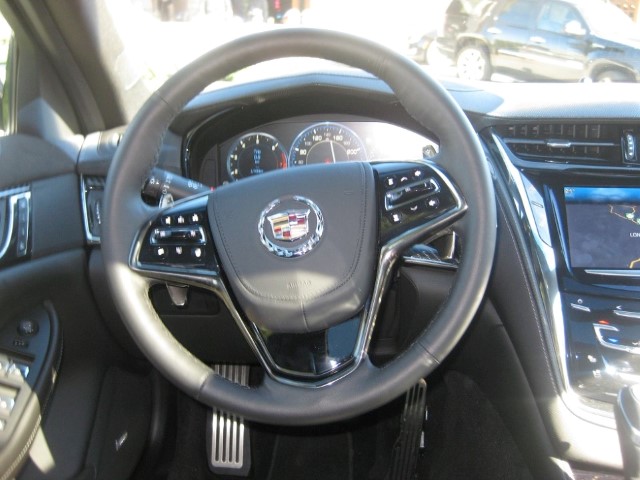
There are seven distinct interiors to choose from that range from leather to carbon fibre to suede and come with authentic wood finishes and hand-sewn stitching. It’s not something that would be the deciding factor in choosing the CTS, but it’s nice to see the time and attention-to-detail they pay for the comfort of their consumers.

Situated front and centre in the instrument panel is CUE, Cadillac’s infotainment system. A lot of people dislike the CUE system, but I tend to favour it over Ford’s version, My Ford Touch. It’s less complicated and I seem to like the way it’s organized making it easy to navigate around without having to swear or pound the steering wheel. It’s an eight-inch screen that helps you adjust your climate, radio, navigation, as well as a number of other things.

The longer wheelbase provides more room for the driver and their passengers creating a more relaxing and luxurious ride. The added touches to the CTS really elevate it to the level it so desires.
Under the Hood
The new Cadillac CTS comes with three engine choices. The base CTS engine is a 2.0-litre (L), 4-cylinder engine that puts out 272 horsepower and 295 lb.-ft. of torque. The engine is mated to a six-speed automatic transmission and can be had in either rear-wheel drive or all-wheel drive.
The next step up is the 3.6-litre (L), six-cylinder engine that puts out 321 horsepower and 275 lb.-ft. of torque. You can opt for either the eight-speed transmission in rear-wheel drive or the six-speed transmission in all-wheel drive.
The final engine choice is the most exciting and that’s the all-new 3.6-litre (L) twin-turbo V-6 engine that powers up to 420 horsepower and 430 lb.-ft. of torque. This only comes in an eight-speed transmission in rear-wheel drive. This new engine called the “Vsport” is the first twin-turbocharged engine ever offered by Cadillac. The turbochargers provide an instant boost in power allowing the CTS Vsport to be launched from 0-100 km/h in approximately 4.4 seconds.
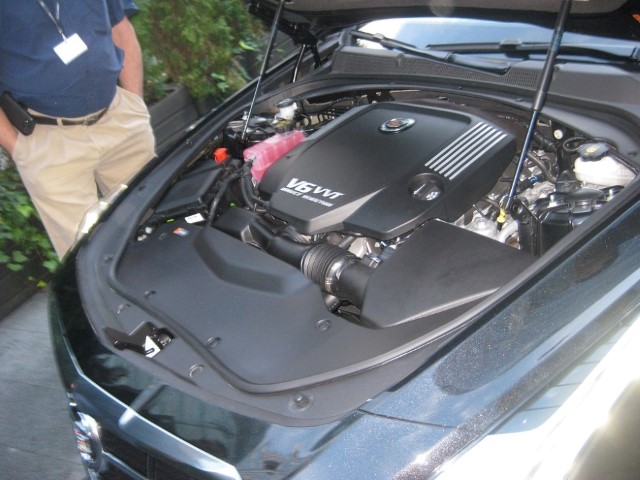
It’s nice to see the capabilities of the new Vsport, but according to Cadillac Canada, it will only account for 10 percent of its sales. The sales should be spread evenly amongst all the other options, so that is where we will focus our drive review.
On the Road
For the drive from Toronto to London and back, I took out the 3.6L regular V-6 to start followed by the base 2.0L. The route map took me and my driving partner onto the highway, some regular street driving and some picturesque country roads.
First up was the 3.6L and acceleration was quick yet smooth. As we had to pass a vehicle on the highway to make our exit stop – the engine revved a little and smoothly blasted past the car ahead and casually veered into the right lane without much of a whimper. We had the eight-speed transmission that comes in the rear-wheel drive set-up and it effortlessly upshifted and downshifted without any lag.
The CTS does feel lighter on the road and gives more of a smaller-size feel opposed to how it should feel as a mid-size sedan. It’s light and nimble on the road, but has the exterior size and roominess as its competitors. The handling was most surprising as it was did exactly what I wanted it to do around those country bends.
When switching to the 2.0L, the lack of acceleration and speed is felt, but it’s not major. The 2.0L can run with the base models of its class – it just doesn’t possess that extra boost when needed. The handling seems about the same, however, you will feel a bit more of the cracks on the road which can be a nuisance at times.
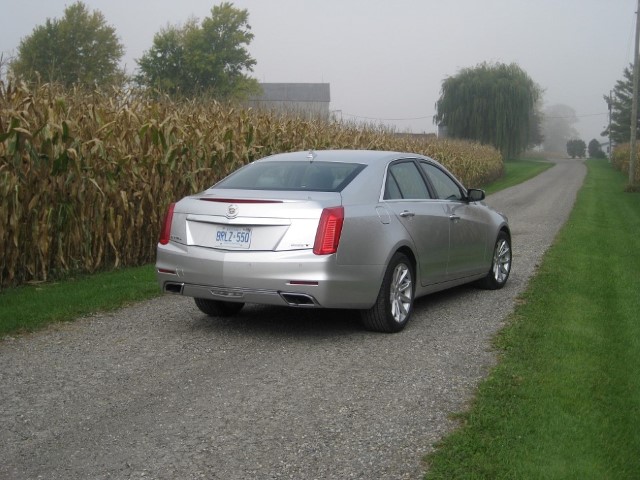
To set-up the CTS how you like it, Cadillac provides you their Magnetic Ride Control as an option. You might be familiar with this as it’s available in the ATS. If you’re in the mood for a quiet and comfortable ride – the touring option is best for you. If you’re looking for to drive with a little edge – sport mode is your option. In sport mode, the suspension tightens allowing you to take on certain corners harshly. However you want to drive that day, the Magnetic Ride Control allows you to transform your CTS with a push of a button.
To add to all of this excitement, Brembo front brakes come standard in all of the CTS models. The high-end performance brakes add to the sophistication of the CTS and its overall quality.
There’s also plenty of technology that’s offered in the CTS including a Driver Awareness and Driver Assist packages that use pulses, vibrations and warnings to keep you alert when you’re moving outside of your lane or coming up to close to a vehicle. Additionally, you can get an Automatic Parallel Parking Assist that can come in handy when dealing with those small parking spots in downtown Toronto.
As with many new launches recently including the Infiniti Q50, the Cadillac CTS can come with Front and Rear Automatic Braking. This (luckily) wasn’t put to the test during our drive, but apparently the vehicle uses sensors, radar and cameras to avoid collisions and if you’re still not paying attention the CTS will brake for you before impact. Very cool, but I would love to see a demonstration before commenting on it.
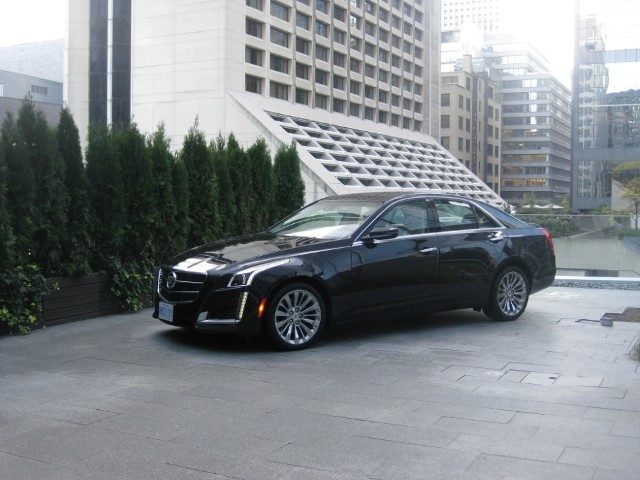
Cadillac has provided a bevy of engine choices for its customers, but one of the most important aspects outside of the improved power is the fact that their lightweight materials used in building the CTS has helped in lowering the CTS’ fuel economy numbers. The 2.0L in rear-wheel drive is rated at 10.5L/100 km in the city and 6.6L/100 km on the highway; while the 3.6L is rated at 11.4L/100 km in the city and 6.9L/100 km on the highway. As per the all-wheel drive options, you can bump up those numbers by 0.3-0.7L/100 km in each area.
In Summary
It’s always difficult for a North American company to compete with the big boys from Germany in regards to mid-size luxury sedans. In the past BMW, Mercedes-Benz and Audi have dominated this segment, but Cadillac has bolstered its new CTS to a point that it has to be part of the discussion. Consumers might still hold an inferior perception towards Cadillac, but I would advise those to at least take it out on a test drive and compare it with those same German vehicles.
The price for the 2.0L starts at $50,895 (Get Better Price), which is less than the BMW 528i at $54,600 and the Mercedes-Benz E300 at $58,800. If you add the luxury, performance or premium package the price does go up all the way to $66,665 (Get Better Price), but that’s up for you to decide. With the performance package you do receive navigation, 18-inch wheels and the Magnetic Ride Control; while in the premium package you get upgraded to a full-leather interior and get treated to the Driver Assist packages.
The CTS has gone through major improvements and is far better than its outgoing model. The new cars arrived this past month in October and its longer, leaner and lower stature will definitely make some indents into the sales of their German friends.
Get a free report from Unhaggle to see the dealer cost, rebates, incentives, and lowest monthly payment.

